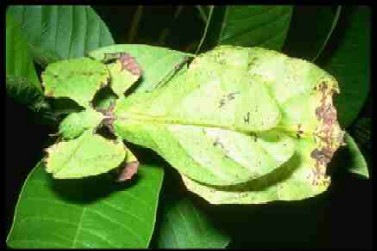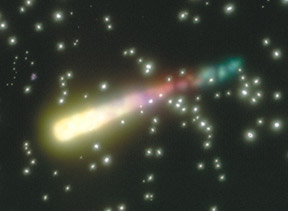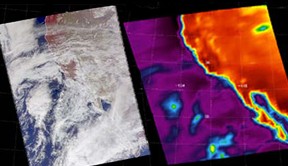Click on image for full size
GSFC/NASA
Related links:
A Perfect Place for Penguins!
News story originally written on October 10, 2003
Scientists have recently discovered that thousands of Adelie Penguins thrive in patches of the chilly Southern Ocean near Antarctica's coastline. In these special areas of the ocean, called polynyas, penguins don't need to travel far to find food.
Much of the shallow ocean near Antarctica is covered with ice, but polynyas are not. That's what makes them special. Without a layer of ice covering it, the ocean water is hit with sunlight and tiny floating algae called phytoplankton grow and multiply very quickly. Phytoplankton is the beginning of the ocean food chain, so when it thrives, the animals that eat it do too, as do the animals that eat them!
A tiny, shrimp-like animal called krill eats the phytoplankton. Since there is so much phytoplankton in a polynya, the little krill munch away and reproduce rapidly, becoming very abundant. Krill is the main food for Adelie Penguins as well as other animals such as seals and whales. So, when the krill is abundant, so are the penguins!
Researchers say that they didn't know how much the penguins depended on polynyas before their study. How could thousands of penguins have been hidden from scientists in these ocean oases for so long? The polynyas are impossible to see from ships because they are surrounded by ice. So, the scientists had to use two satellites to take a look at them.
The satellites provided weekly measurements of the amount of chlorophyll in the polynyas. Chlorophyll is the pigment in plants that makes them green. It allows them to harness the Sun's energy through photosynthesis to make their own food. If the satellites recorded more chlorophyll in the polynyas, then that meant the phytoplankton were thriving. Where there is phytoplankton there is krill and were there is krill there is penguins!














